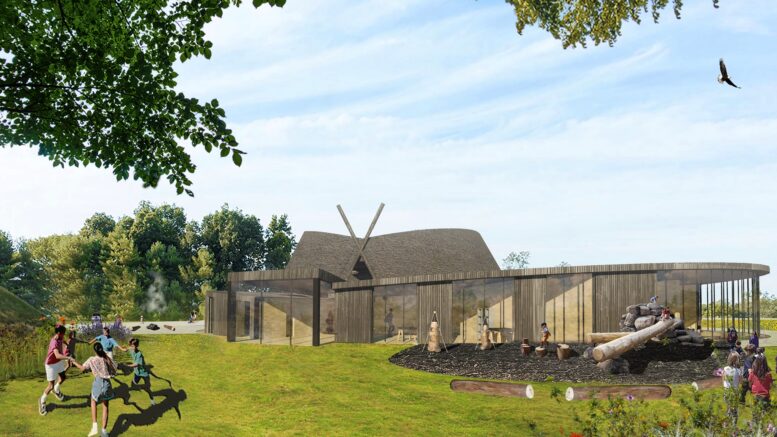Tyendinaga’s Kenhtè:ke Language and Cultural Centre is another step closer to becoming a reality following an announcement of a $9.6 million investment from the federal government.
Marc Miller, Minister of Crown-Indigenous, Callie Hill, executive director of Tsi Tyónnheht Onkwawén:na Language and Cultural Centre, and Chief R. Donald Maracle, Chief of the Mohawks of the Bay of Quinte, announced the funding on Monday to support the construction of the Kenhtè:ke Language and Cultural Centre on Tyendinaga Mohawk Territory.
The Centre will provide educational and cultural programs for community members, non-Indigenous organizations and individuals who are interested in learning about Kanyen’kehá:ka (Mohawk) cultural values and traditions to support reconciliation. It includes a teaching kitchen, an art studio and a gathering space for up to 150 people for programs, events and celebrations.
“The Kenhtè:ke Language and Cultural Centre will not only provide the community with a new gathering space, it will also provide a safe space where individuals can celebrate, and gain a deeper knowledge and understanding of their Kanyen’kehá:ka culture, values and traditions,” said Miller. “We will continue to work with Indigenous, provincial, territorial and municipal partners to invest in local community infrastructure, promote climate action, and build more resilient and inclusive communities across Canada.”
Designed to achieve net-zero carbon performance, the building will use technologies such as solar panels and a geothermal ground source heat pump. This state-of-the-art sustainable building will be respectful and in harmony with its natural surroundings.
In line with the Kanyen’kehá:ka worldview to eliminate barriers to participation in all elements of daily life, the Centre will ensure that services and programs are accessible to all, in accordance with the highest accessibility standards and codes.
As a cultural feature of the community, the facility will also include enhanced accessibility by combining several programs currently administered in separate locations into one building. People of all ages and abilities will benefit from increased opportunities to learn the language, history and worldview of Kanyen’kehá:ka.
“This is a very happy and exciting day for our community, and we thank the federal government for joining in support of this much needed new language and cultural centre,” said Maracle. “Our Kanyen’kéha (Mohawk Language) has been oppressed in our history by colonial government policy. We work daily to foster a healthy, sustainable Kanyen’kehá:ka community built on and united by our language, culture, traditions, knowledge, and history, and facilities like this one will be essential as we work to realize this vision. Language restoration is part of the path of reconciliation.”

